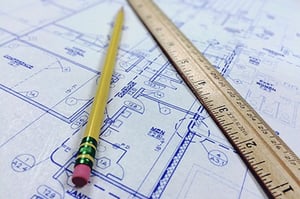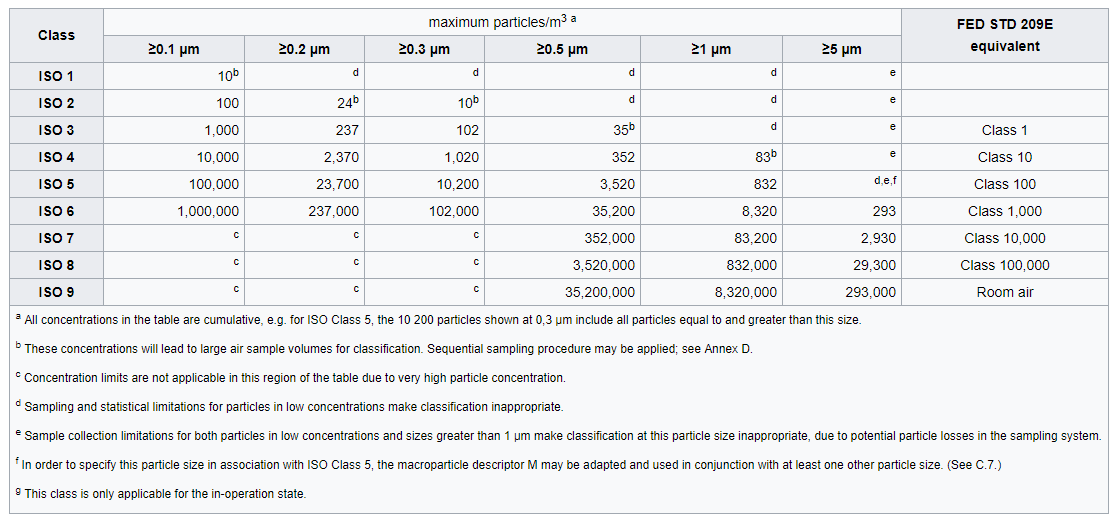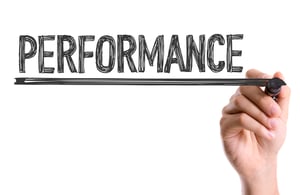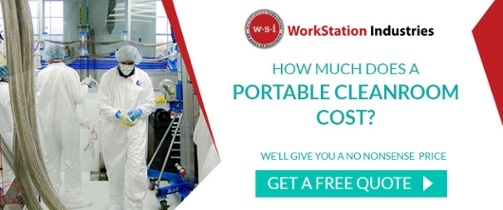If you work in an environment where stringent cleanliness is critical to the success of your process, you know the importance of a clean room design.
Used in nearly every industry where a controlled environment is critical, clean rooms vary in complexity and use. Whether it’s in manufacturing, biotech or pharmaceutical industries, clean rooms play an essential role in ensuring optimal performance and keeping a room contaminate free.
Though they are used across several industries, implementing clean room standards can be an overwhelming process depending on your application and risk for contamination. At times, it may even feel like clean room equipment providers are speaking another language with all the technical terms and information they have at their fingertips.
Here are some easy steps that will help you decode the process behind implementing clean room standards, and help you find the best fit for your workspace.
Step 1: Evaluate Your Layout
 Before you begin the process of implementing clean room standards, it’s important to evaluate your space. This includes how people and material flow. After all, workers can be the largest contamination source in a space.
Before you begin the process of implementing clean room standards, it’s important to evaluate your space. This includes how people and material flow. After all, workers can be the largest contamination source in a space.
Doing this first also helps you determine where the best location will be for your clean room.
You’ll also need to assess whether it’s more efficient and plausible for your company to build a clean room into a separate space or integrate a portable, modular clean room inside another room or laboratory area.
Here are some other points to consider. Spaces should:
-
Have doors and pathways that are free of a critical process.
-
Include a single access point. This prevents it from becoming a pathway.
-
Take into account risk of cross-contamination. Examine any of these risks, looking at inflow and outflow routes and containment.
Your room’s layout plays a critical role in a clean room system’s ability to filter out airborne particles. Evaluating your layout also will help you better identify the classification level needed to meet national standards.
Step 2: Identify Your Classification
Every industry has a different set of needs and requirements. Some are stricter than others, which is why it’s important to know what’s required for your industry and application.
Clean room classifications address the level of cleanliness in the air. Each clean room class must comply with a certain level of cleanliness, according to the particle size and particle concentration found in the air.
In the United States and Canada, the primary authority is the International Standards Organization (ISO) classification system, ISO 14644-1. Clean room classes included in this system include ISO 1 through ISO 9, with ISO 1 the cleanest and ISO 9 the least clean. It’s important to note that even with the “dirtiest” class, it’s still much cleaner than a regular space. Of these, ISO 7 and 8 are the most common.

Why is it important to identify your classification? Put simply, the more clean a room is, the more expensive it is to create and maintain with the necessary equipment. If you opt to design a room to the wrong specification, you may end up spending too much money on a clean room you don’t need.
On the other side of the spectrum, you could also end up with a room where your product will suffer from a contaminated environment.
Neither is good for your bottom line, which is why it’s important to know your classification. The Institute of Environmental Sciences and Technology (IEST) can assist you in determining which classification you should follow for your industry and product. In determining this, you should know:
-
Your sources of contamination
-
The size of particles you’ll need to filter out
-
The amount of air you’ll need to circulate to remove the contamination
Step 3: Understand How Classification Applies To 3 States
 Now that you have a classification in mind for your clean room, you should understand how that applies to the three different states your room is in … as built, at rest and operational.
Now that you have a classification in mind for your clean room, you should understand how that applies to the three different states your room is in … as built, at rest and operational.
-
As built refers to how your space performs directly after it is constructed - before any furniture, equipment or even employees are placed in the clean room.
-
At rest refers to the time after any equipment is moved in. However, at this point, no processes are running and employees are not yet moved in. Even with no processes under way, supplies and machinery can create some contamination.
-
Operational refers to the time when a clean room is up and running with workers in place. This state will have the greatest impact on the contamination levels in a space.
Looking at the classification that you have selected for your clean room, double check that it addresses any contamination levels at the operational stage. For example, machinery can disrupt airflow. Even workers can shed particulate. Making adjustments in advance will save you a headache and ensure you pass any inspections that assess your clean room standards.
Step 4: Know How A Clean Room Works
 Understanding clean room classifications can be a difficult hurdle in implementing standards. The next step is to understand how clean rooms function so that you can implement these standards.
Understanding clean room classifications can be a difficult hurdle in implementing standards. The next step is to understand how clean rooms function so that you can implement these standards.
Clean rooms operate using a positive pressure method in which air is pumped into a space through a filter. This high-powered filter is necessary because it removes any contamination coming into the clean room from the outside. That air flows down and goes through any vents in the flooring. Any particles that are in the room are further forced out.
Rooms that use this positive pressure method have a higher air pressure than surrounding rooms. This, in turn, forces contaminated air found in other spaces away from the clean room.
While most clean rooms are positive pressurized, there are some clean rooms that operate on negative pressure. Air is always flowing out of a positive pressure room. However, in a negative pressure clean room, the opposite occurs. Typically, these types of rooms are found in labs that deal with infectious diseases or substances that may be hazardous. This is because a negative pressure clean room contains dangerous contaminants, instead pulling air in from other rooms and filtering the air.
Step 5: Assess What This Means For Your Space
When it comes down to it, airflow is king. Everything you implement in regards to your clean room standards boils down to airflow. That’s because air is the most important component in ridding a room of contaminants.
The rate of air change you require can affect the cost of your clean room, since proper airflow requires items like filters and air return space. The cleaner the space you require, the greater the rate of air change should be implemented.
But, how can you be sure the standards by which you are constructing your clean room are appropriate for your processes? What if the standards you must meet are difficult to implement with your current set-up?
Working with a clean room manufacturer can help you assess how to implement any required standards for your operation and go over options you have, such as portable clean rooms.
A clean room expert will work with you on customizing a great option that will benefit your production and minimize hassles often associated with implementing these standards.
You can read more about these options in our article, Is A Portable Clean Room Right For Your Business?


